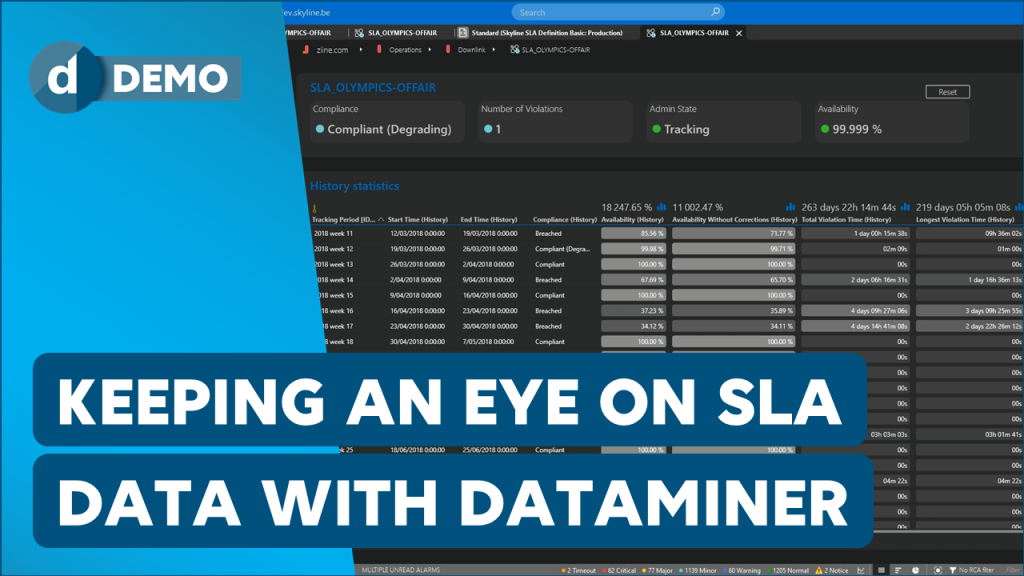The old adage “Short reckonings make long friends” is particularly applicable in the business world, where fulfilling commitments is key to fostering customer loyalty. In this blog post, we’ll explain what a Service Level Agreement (SLA) is and how organizations of all sizes can use DataMiner to monitor compliance metrics. As a bonus, we’ve prepared a series of step-by-step videos and a demo package that will help you gain hands-on experience in tracking SLAs using DataMiner.
Why you should care about SLAs
A service level agreement (SLA) is a contract between a service provider and a customer that outlines the service to be provided, the expected performance level, how performance will be measured, and what happens if performance levels are not met.

In the telecommunications industry, SLAs set performance thresholds for specific service aspects, like error rates, request latency, and uptime. These performance metrics evaluate the quality of service provided and determine whether the SLA is being met.
Monitoring the appropriate metrics is an important part of an SLA’s success. Without the right data, it will be difficult to know how the arrangement serves the organization.
Common SLA metrics include:
- Availability and uptime
- Connection speed
- Error rates
- Resolution time
- Mean time to recovery
Benefits of SLAs include:
- Improve quality of service and customer experience
- Facilitate communication
- Increase service continuity
- Minimize risk
Business intelligence meets DataMiner
DataMiner SLA Management enables stakeholders to monitor their organization’s SLAs for both incoming and outgoing services, and Operating Level Agreements (OLA) for the different interdependent internal sections of the corporation.
The solution integrates seamlessly with the existing DataMiner environment, including dashboards, notifications, Correlation, and mobile access. SLA Management also boasts an open architecture, complete with open XML SLA definitions, user-defined alarm thresholds, and APIs to integrate with northbound applications such as trouble ticket platforms.
If your company has Service Level Agreements (SLAs) and you’re seeking a better way to guarantee their compliance, DataMiner provides all the necessary tools. These videos explain how to create, configure, and monitor SLAs in DataMiner:
Since nothing compares with hands-on experience, content expert Thijs has prepared a demo package, available for download from the DataMiner Catalog, along with a use case, designed to demonstrate the deployment and utilization of SLAs in your DataMiner System.
This use case was meticulously crafted to showcase the benefits of using DataMiner to operate a satellite downlink with redundant antennas. This scenario is designed to inspire creative thinking, prompting you and your team to explore diverse ways DataMiner can be leveraged to optimize day-to-day operations.
Curious to learn more about DataMiner SLAs? Visit the DataMiner documentation: DataMiner Business Intelligence.


Insightful